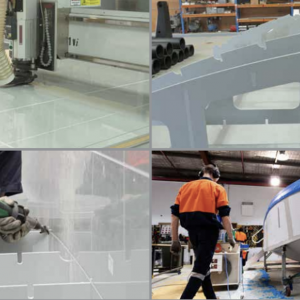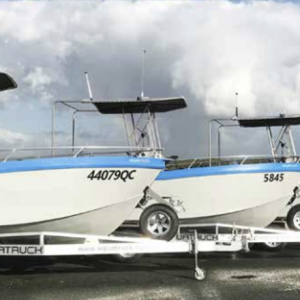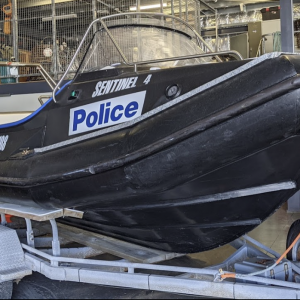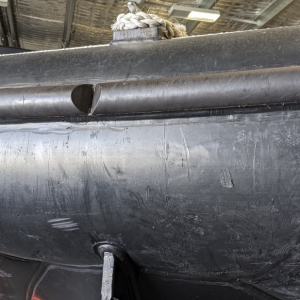High Density Polyethylene …

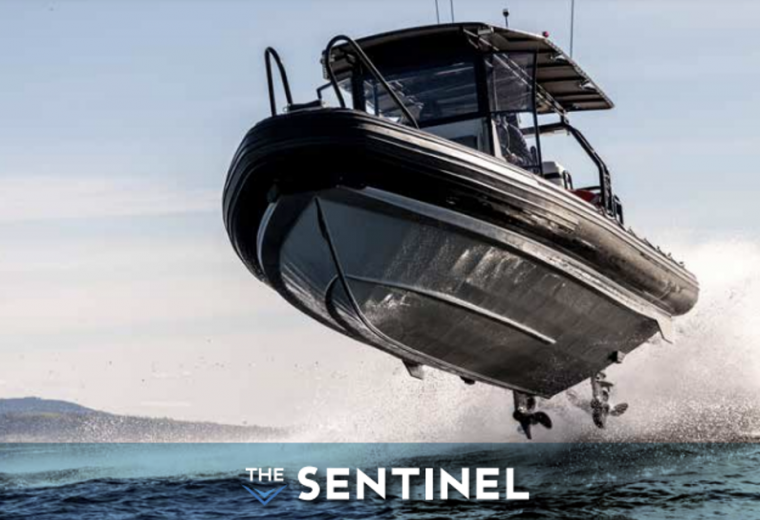
Is it the future of small craft in Australia?
Written by Chris Davies CEng, MRINA, TMIEAust
HDPE has become the workhorse of all of the Engineering Plastics available today. HDPE is impact and abrasion resistant such that it is rated better than steel!
It’s a long way to the repair shop in Antarctica you wouldn’t wont stuff to break so who would you get equipment from? Elphinstone ENG in Tasmania a company that manufacturers Logging Trailers & Antarctic Equipment.

You will find HDPE under its trade name POLYSTONE® on mining equipment such as chutes and mega dump truck liners. Because it doesn’t leak HDPE is used on gas pipelines, desalination plants, protective coating on steel pipes, submarine electrical cable, water tanks. So why on skids in Antarctica? Because friction generates heat causing ice to melt. HDPE is self-lubricating and has a low coefficient of friction. So tough that you can drag it along with an excavator.
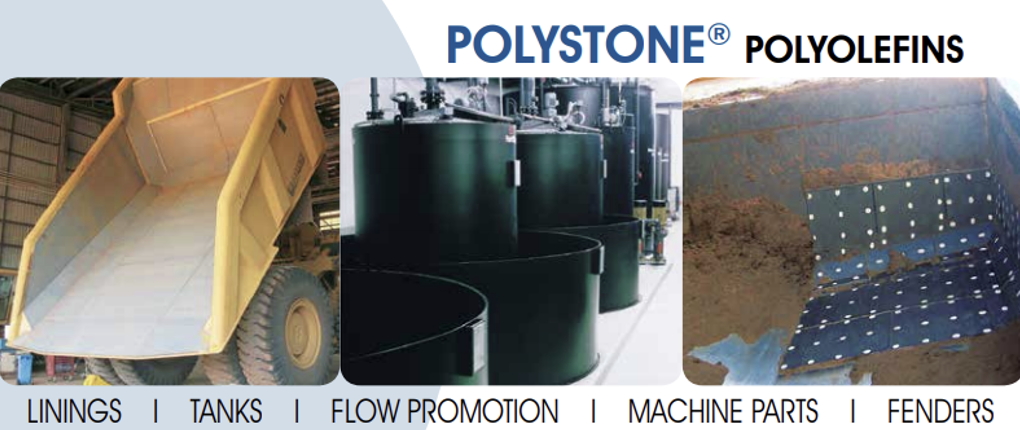
Changing our perceptions of plastic
With 22 years’ experience as a Structural Engineer designing High-Speed Large Craft, I am very familiar with aluminium but HDPE as a material for Vessel construction is something new for me, I wanted to know more about HDPE so approached an old colleague, Stephen McCullum the Senior Business Development Manager at PFG Group. The sailing fraternity will be more familiar with his nickname “Rowdy”. He invited me on a tour of their facilities at Prince of Wales Bay in Hobart. Speaking with Rowdy, He saw the industry at a similar point to that of aluminium ship building 30 years ago. They are at the same development stage, the current challenge for them is breaking the culture and perception of plastic boats.
In the 80’s there were papers proposing large passenger vessels built out of aluminium. Currently the limitation in HDPE Vessel size is around 12m but this might change soon. I would not propose building a ferry to cross Bass Strait from HDPE at this time.
Construction
The construction of plastic HDPE vessels is very similar to that of an aluminium plate boat. The HDPE plate is manufactured by ROCHLING Engineering Plastics in Germany. Frames are nested then cut on a water jet bed.
To get that nice clean look on the outside of an aluminium hull most of the design work is in minimising welding to avoid plate distortion and maintain strength. All aluminium is tempered but when you weld it you destroy that temper. A lot of the design work in large 100m Catamarans is spent trying not to weld aluminium. Because that is impractical the design has to be based upon “welded” allowable strength. In the case of aluminium extrusion 6082 T6 this is 42% of its “unwelded” tempered strength.
If you look at the construction of an aluminium dinghy a lot has gone into developing keel, chine and gunnel extrusions and the stiffeners are not welded to the hull plate.
In welding terms “DC” or double continuous welds are used in high stress areas of construction such as jet rooms. In HDPE boats, everything is DC welded as distortion is minimal with the thickness of plate used. This is what gives HDPE boats strength and toughness.
What struck me coming from aluminium ship building was how pleasant and quiet the yard was. No screaming millers! (An angle grinder with a carbide tooth blade as sharp and dangerous as a chainsaw.)
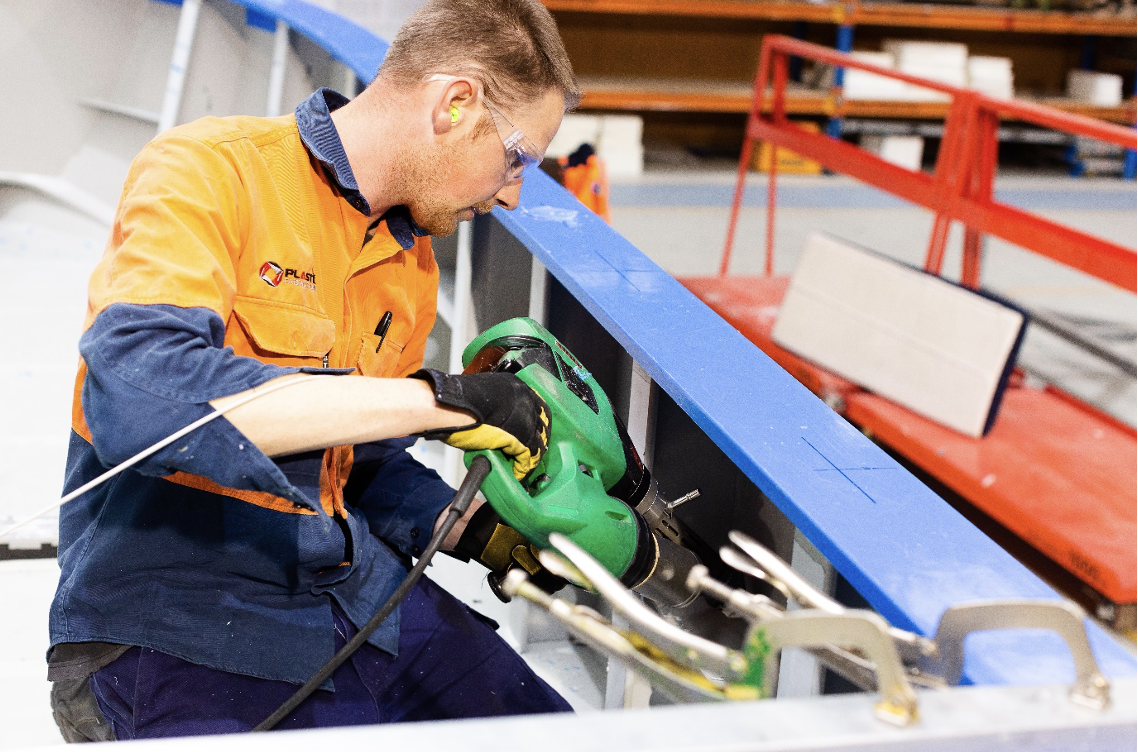
The tools used in construction are very similar to aluminium, saws and planers. The welding process is different to that of welding metals as there is no molten pool. Welding of HDPE pipes is either by a process called butt fusion or electrofusion. In both cases the pipes are melted, there are no consumables. For creating a fillet weld I would describe it as a hot air gun with a filler rod. The frames are tack welded with a manual fed “tri” fillet rod then finished off with a larger temperature controlled “gun” with a ceramic former and faster feed mechanism. This looks much like a very large hot glue gun. In aluminium welding this would be similar to using a WIA Fabricator MIG then final welding with a high frequency pulse MIG. Normal non-destructive testing (NDT) ultrasonics and radiograph don’t work with HDPE. Thus, skilled tradesman and visual inspection is important.
Corrosion Resistant and Zero Maintenance
Since the 60’s the main use of HDPE has been in piping because it is rustproof, break resistant and doesn’t leak. HDPE simply doesn’t corrode; this translates to zero maintenance cost for the life of the vessel. From a commercial perspective avoiding expenditure on paint, antifoul and pulling the boat out yearly is very attractive.
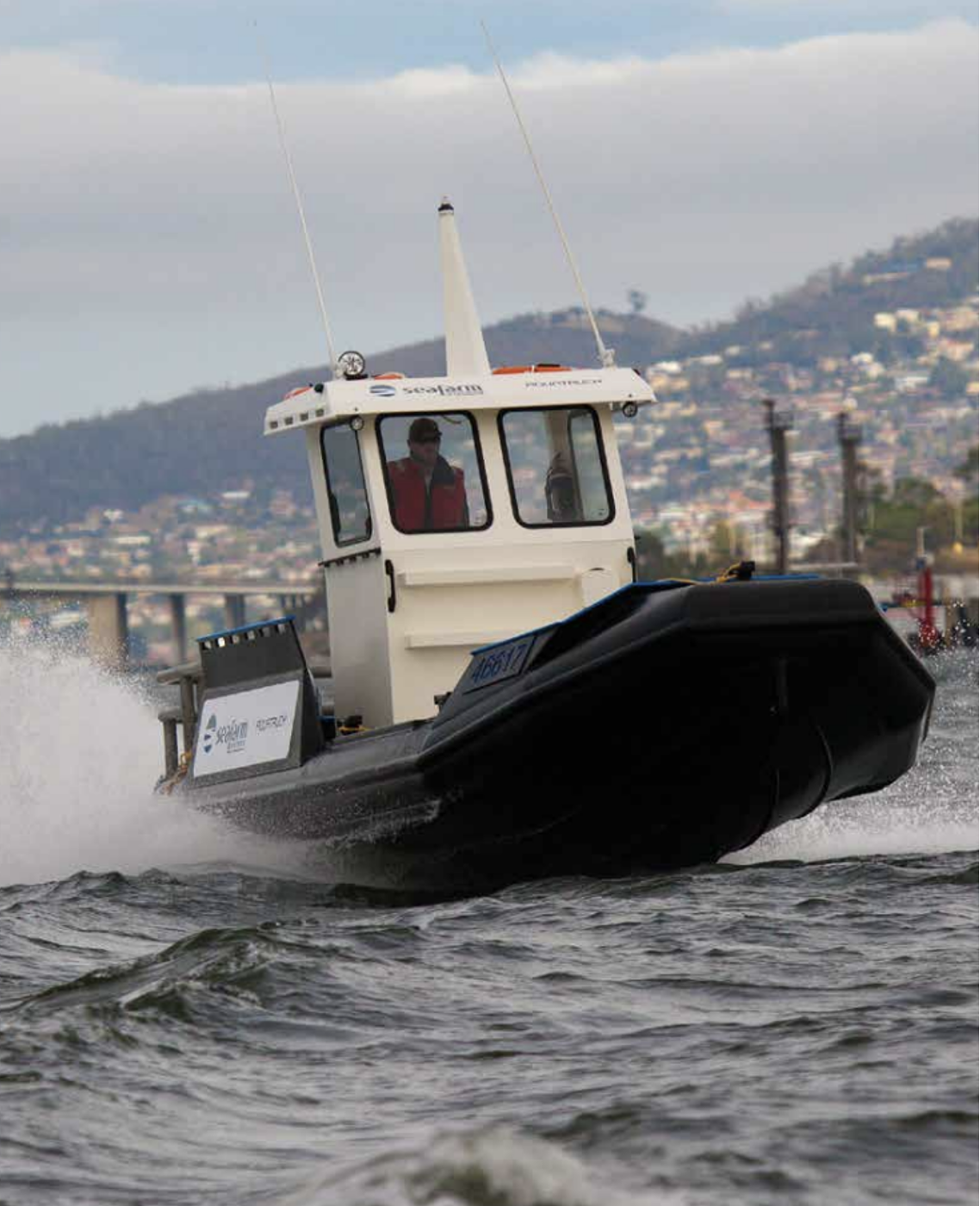
Design life of HDPE.
Pipe manufactures in Western Australia provided information on the life expectancy of HDPE. They said the minimum design life set by the industry initially was 50 years but in reality, they expect to see pipelines in use for over 100 years. The limiting factor in production was transportation lengths for bigger sizes. This is overcome by onsite fusion hotplate welding.
The main degradation is from UV. To stop this, the Natural HDPE has carbon black added.
The first HDPE RIB’s were made for aquaculture 26 years ago and marine rescue over 20 years ago by PFG Group. In aquaculture the original vessels are still in use after 26 years of continuous commercial survey.
When life depends on it.
To get a better insight I visited the Tasmanian Police Marine Search & Rescue workshops in Hobart.
Rescue operations tend not to be in calm waters or nice sandy beaches, a second’s hesitation could mean life or death, what would be the ideal construction material? Why not make it out of the same material tug boat fenders use, one that bounces off rocks. You could punch a hole in a GRP boat, an aluminium boat over rocks tends to gall, HDPE will slide… Look at the bow of the Tasmanian Police Marine & Rescue Boat Sentinel 4, it has had a few knocks!
The comment the mechanic gave me was if anything has a weakness these guys will break it! The original Sentinel model seen here has had two sets of trailers three sets of outboards (Over 1000 hours each) and not one structural failure or repair to the hull in that time. The crews that use them said they had no intention of replacing them as nothing comes close to how they perform in service and since they hadn’t managed to break one yet, they just keep buying new outboards when their budget allows.
Weight, Dampening & Human Fatigue
The density of HDPE is .94-.96 g/cm2.This means it is buoyancy neutral, it will float in fresh water. Incidentally this is good for building underwater ROV’s as you don’t have to allow for the mass of the structure. HDPE doesn’t absorb water so will not swell or get heavy over time; some plastics do such as nylon used in bearings.
HDPE has excellent dampening qualities; resonance frequency is a function of stiffness/mass. The dampening characteristics give vessels made of HDPE a very smooth ride. Resulting in much lower fatigue for the user. This has been a major benefit for the primary users in aquaculture of these type of vessels that spend long hours at sea on average 4000 hours annually.
Environmental impact.
The safety data sheet for HDPE list ecological information as “not harmful”. It is insoluble in water and considered to be harmless to health if handled in the correct manner. HDPE at end of life can easily be cut up and recycled, although none of these vessels have been scrapped as yet. Does it burn? Yes, but ignition temperature is over 3600˚C.
Antifoul and its copper content is becoming a concern environmentally such that manufacturers are looking at viable alternatives. HDPE will foul but it is easily removed by high pressure wash. For work boats this hasn’t been an issue as they are constantly moving. Paint or antifoul won’t stick to HDPE. I have heard that 3M is developing a product containing biocide for HDPE, but I am not aware of a product that is available to date. Large high-speed vessels like Francisco use a hard coat such as Seacoat’s Siloxane/Silane. This technology has started to filter down to pleasure craft. The other type is soft silicones such as International Intersleek.
What is the future?
MILITARY
PFG is leading the way with a new generation of Vessel called the SENTINEL.
Focusing on the proven track record in marine rescue & aquaculture PFG Group is aiming to market HDPE’s toughness, zero maintenance, zero structural failures, & superior ride to a wider community of global users.
I would like to talk about ballistics testing, low radar signature & detection including battle survivability but that is classified top secret.
In terms of abuse and shock this goes way beyond acceptable civilian levels! This is a whole new ball game and perhaps the subject of another article.
Chris Davies:
- Has 22 years’ experience as a Structural Engineer at Incat / Revolution Design designing High-Speed Light Craft (HSLC) to class society DNV-GL. Using Finite Element Analysis is a specialist in detail design of high fatigue life fabricated aluminium & steel structures.
- Has a strong practical foundation based on hands-on experience with a trade background.
- Has been responsible for the Cathodic Protection Design, Commissioning & Troubleshooting of Incat Vessels since 2012 or Hull 069. Now a consultant specialising in marine and general corrosion.
Is a Full Member of Royal institution of Naval Architects, is a Chartered Engineer with the Engineering Council of United Kingdom and a Member of Australasian Corrosion Association.

